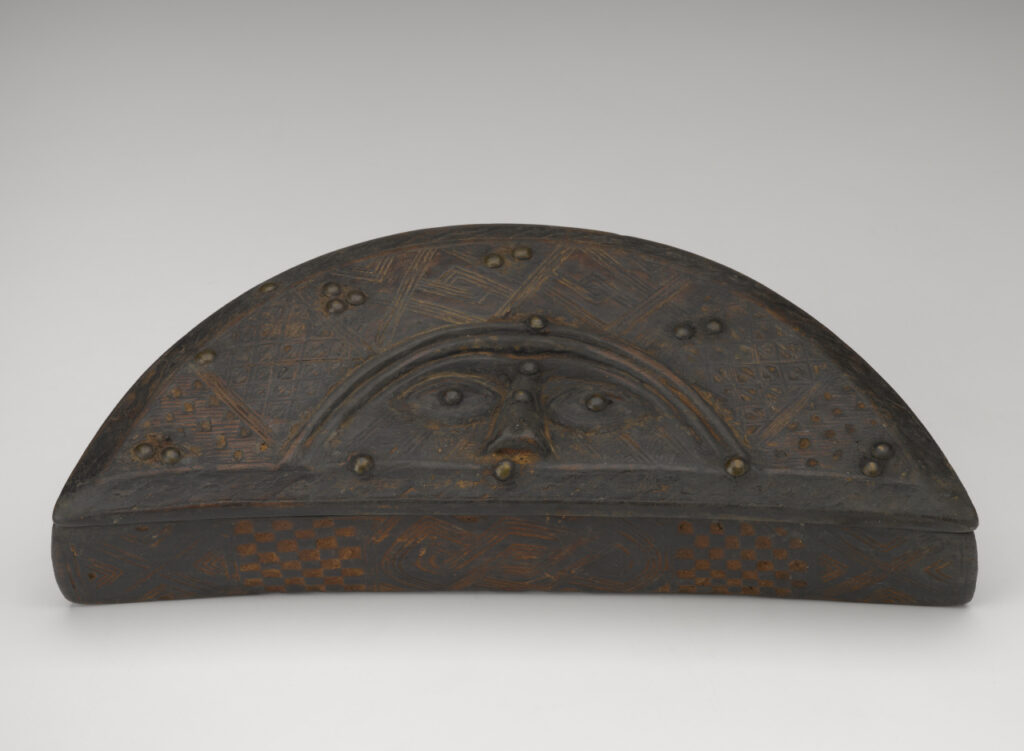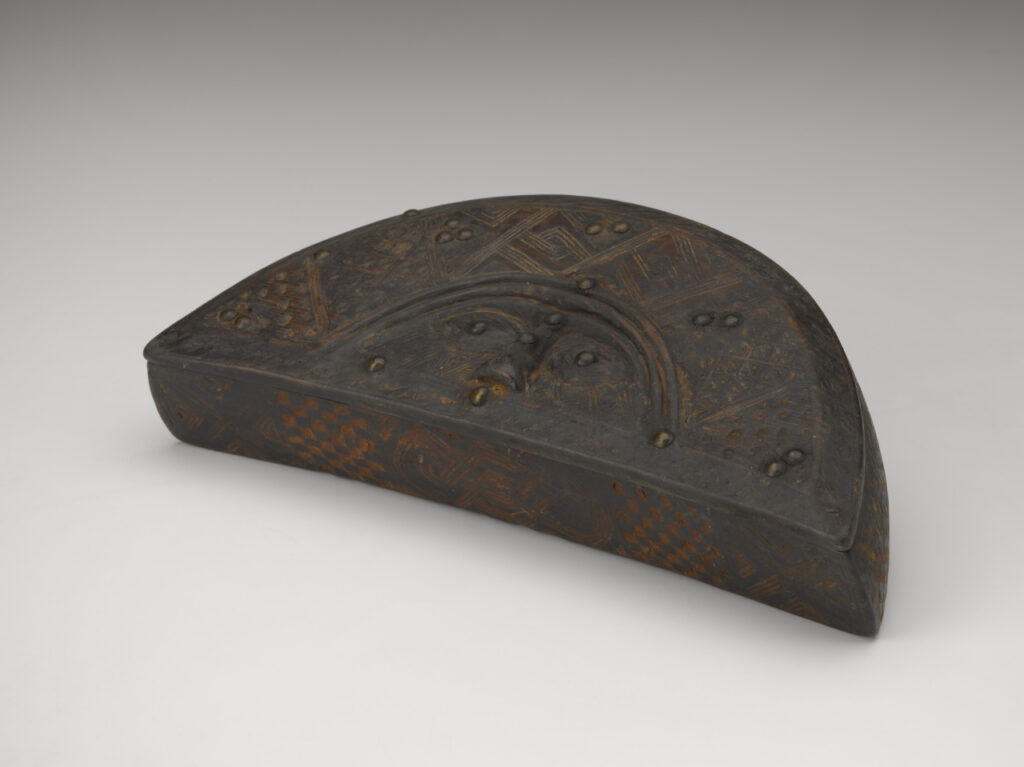Cosmetic Box (ngedi mu ntey) (work of art)
Información sobre la obra de arte
Key Ideas
- This object is a wooden box in the shape of a half-moon. It is decorated with patterns that are usually seen in Kuba cut-pile cloth. The wood is dark in color, and the incised designs are red-orange in color.
- This is a cosmetic box, or ngedi mu ntey, from the Kuba Kingdom. The Kuba Kingdom is also known as the Kingdom of the Bakuba or Bushongo. It is a traditional kingdom in Central Africa.
- Cosmetic boxes were used to store tukula powder and paste. Sometimes they were used for holding razors for cutting raffia, hairpins, or ritual objects. This box most likely would have been used to store tukula or camwood powder.
- Tukula is a prized material in the Kuba Kingdom. It is made from powdered camwood. The powder can be mixed with palm oil to create a paste. The paste can be used as a textile dye, a paint for objects and faces, and to anoint the dead. The paste can also be baked into blocks that are carved with designs and presented as funerary (burial-related) gifts or mboongitool.
Más información
This ngedi mu ntey (cosmetic box) comes from the Kuba Kingdom. The Kuba Kingdom, also known as the Kingdom of the Bakuba or Bushongo, is a traditional kingdom in Central Africa. Wooden boxes like this one are used to hold objects of high value in the Kuba Kingdom. The half-moon shape of this box is a common shape for ngedi mu ntey. The box is carved with designs that are typical of Kuba cut-pile cloth. The dark wood of the box contrasts with the red-orange color of the incised patterns. Cosmetic boxes were used to store tukula powder and paste. Sometimes they were used for holding razors for cutting raffia, hairpins, or ritual objects. This box most likely would have been used to store tukula or camwood powder.
Tukula is a prized material in the Kuba Kingdom. It comes from the powdered heartwood of camwood. It is made by rubbing two pieces of heartwood together, which produces a red powder. The powder can be mixed with palm oil to create a paste. This paste is used as a textile dye, a paint for objects and faces, and to anoint the dead. Tukula is also a cosmetic and health product for skin. It is valued for its antiseptic, antibacterial, anti-inflammatory, and anti-aging properties. The color red is important in Kuba culture. Tukula is used to ornament the face, hair, and chest during dances and important ceremonies. Tukula is similar to other plants around the world that have been historically used to make red dyes and pigments, such as madder and brazilwood.
Recursos adicionales
Recursos para los profesores
- Read a short essay about the Kuba Kingdom.
- View an example of a Kuba funerary object.
Recursos para los estudiantes
- Look at a similar box at the Sainsbury Centre at the University of East Anglia.
- View a tukula mortar at the Metropolitan Museum of Art.
Imágenes
-

Cosmetic Box (ngedi mu ntey)
A dark brown wooden box set against a gray-toned backdrop. The box is half-moon-shaped and features carved designs. In the center, along the bottom edge of the box lid, is a carving of the top half of a human face. Two eyes and a nose are surrounded by incised patterns that are red-orange in color. The same designs appear on the sides of the box.

